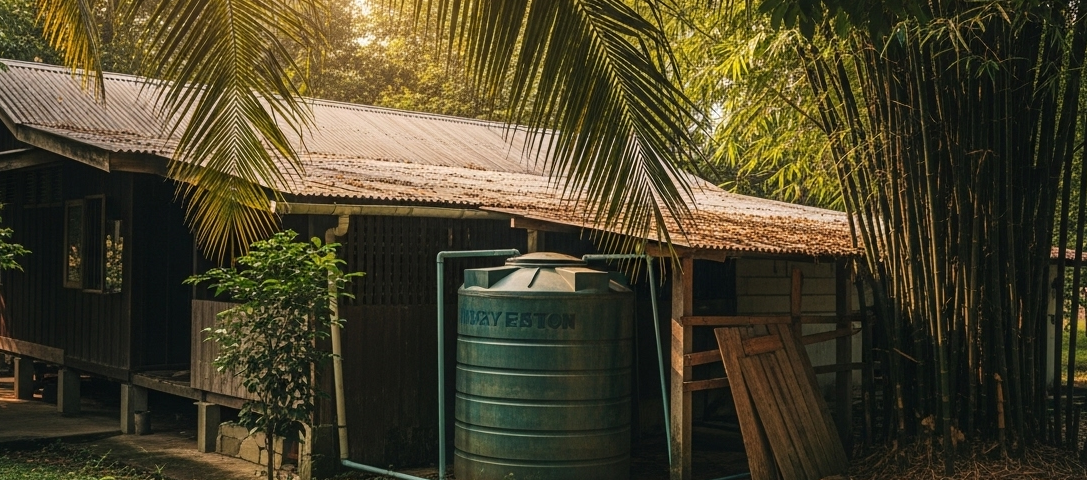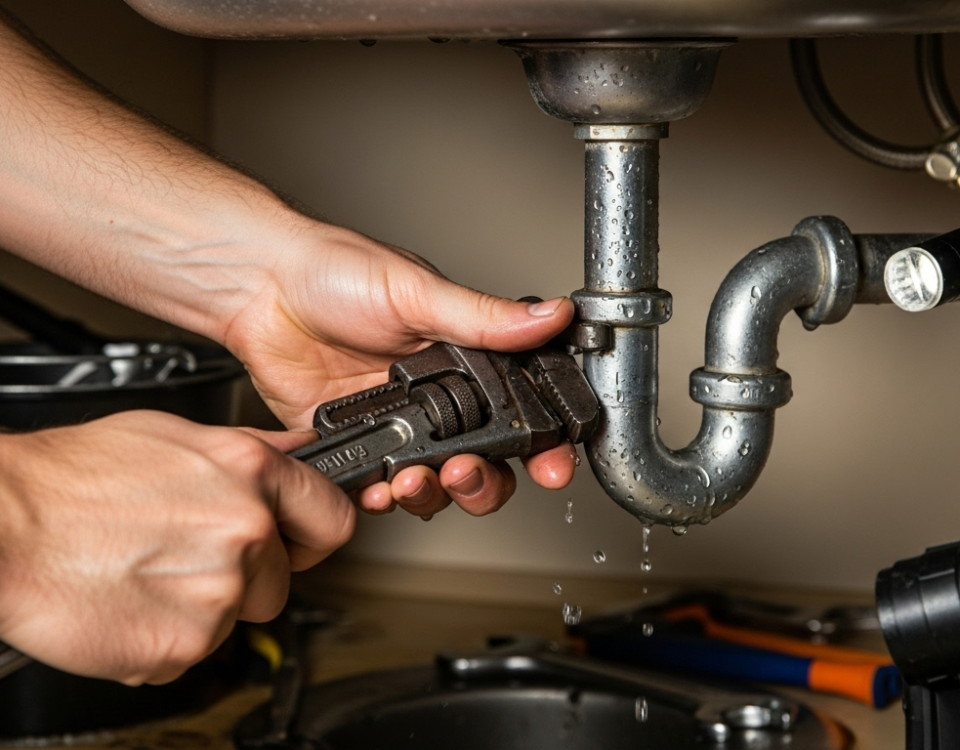Beyond the Tap: Water Tank Maintenance Tips

Why Professional Plumbing Matters More Than Ever
October 21, 2025In Malaysia, the rooftop water tank serves as an unsung hero, ensuring a consistent water supply despite fluctuations in municipal pressure. However, due to its elevated position, it often becomes a fixture that is simply set and forgotten. The truth is that this vital component significantly impacts the health of both your roof structure and your entire plumbing system.
Neglecting your water tank not only jeopardizes your water quality but also stands as one of the quickest ways to create leaks, induce structural stress, and cause expensive clogs throughout your home. Therefore, a dedicated maintenance plan with a dual focus is crucial for ensuring longevity and providing peace of mind.
1. The Roof's Perspective: Hidden Structural Dangers
The primary danger of a neglected rooftop tank is its impact on the structural integrity of your roof.
A. Leaks at the Connection Points
Water tanks require inlet, outlet, and overflow piping that must pass through your roof deck. These penetrations are prime candidates for leaks.
-
Poorly Maintained Seals: Over time, the sealant around the pipe flanges and tank base will degrade under the harsh Malaysian sun and rain. This allows water to slowly seep into the attic and framing, leading to wood rot, ceiling damage, and mould growth.
-
Overflow Issues: If the float valve inside the tank fails, the tank will overflow. While the overflow pipe is meant to divert this water, a blockage in the pipe or a splash-back of water can direct large volumes onto the roof, overwhelming the waterproofing and causing immediate leaks.
Maintenance Tip: During your annual roof inspection, pay special attention to the area directly underneath and surrounding the water tank base. Look for cracks in the sealant or signs of moisture on the ceiling below.
B. The Weight Load Factor
A fully filled water tank is an enormous static load. While your roof structure is built to handle this weight, any pre-existing rot or structural weakening (perhaps from an old, minor leak) will be severely exacerbated by the constant weight of the tank. Regular professional checks ensure the underlying support beams remain sound.
2. The Plumbing's Perspective: Clogs and Pump Failure
While you might only think about cleaning the water tank every few years, the sediment accumulating inside is silently wrecking your plumbing fixtures and appliances.
A. Sediment: The Silent Pipe Blocker
Water naturally carries trace minerals, dirt, and sediment. Over months, these particles settle at the bottom of the tank. When water is drawn for your home, this sediment is agitated and pulled into the pipes.
-
Clogged Fixtures: The fine particles often get stuck in the small openings of faucets, showerheads, and toilet valves, leading to reduced water pressure and frequent clogs that are difficult to clear.
-
Water Heater Damage: Sediment accelerates corrosion inside your water heater, reducing its efficiency and lifespan.
B. Water Pump Stress and Failure
Many homes rely on a booster pump to maintain strong water pressure from the tank. If the water level drops too low due to a faulty float valve or if the tank feed lines are blocked by sediment, the pump can begin to "run dry."
Running dry is the fastest way to burn out a water pump motor, leading to a sudden, complete loss of water pressure and a costly replacement bill. Regular checks on the float valve's operation are critical to prevent this.
C. The Tank's Health = Your Health
Though not a roof or plumbing failure, ensuring the tank lid is tightly sealed and the tank is cleaned semi-annually prevents the growth of algae, bacteria, and the entry of pests (like rodents or lizards), which can contaminate your household water supply.
The Best Defense: A Combined Inspection Approach
Due to the intimate connection between these systems, the most efficient and protective measure you can take is to schedule a combined roof and plumbing system health check.
Instead of calling a plumber for a slow drain and a separate roofer for a leak, choose a service provider who understands how the rooftop tank affects both.
A comprehensive inspection should include:
-
Roof Integrity Check: Inspecting the tank's structural base, pipe penetrations, and surrounding roof flashing.
-
Valve and Pump Test: Verifying the function of the main shut-off valve, the internal float valve, and the water booster pump.
-
Water Quality Review: Assessing the need for a deep-clean to remove internal sediment and bio-buildup.
Don't wait for a burst pipe or a dripping ceiling to remind you of your water tank. Regular, targeted maintenance is the key to protecting your biggest investment.
Conclusion
The rooftop water tank is an integral yet often-overlooked component of the Malaysian home, linking your roof’s structural safety directly to your home’s internal plumbing health. Ignoring this fixture is not a matter of saving time, but a ticking clock for potential structural deterioration, costly pipe blockages, and pump failure.
By committing to a regular, combined maintenance approach—focusing on sealing integrity at the roof level and sediment management at the plumbing level—homeowners can prevent cascading damage. Proactive water tank care ensures a reliable water supply, preserves your roof's lifespan, and guards your entire home against unnecessary and expensive emergencies. Don't wait for a leak or a clog; safeguard your investment by putting the rooftop water tank back on your essential home maintenance checklist.


